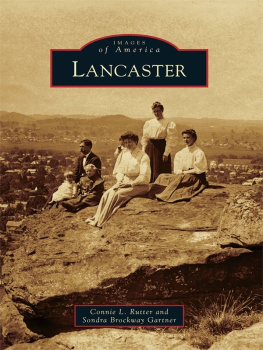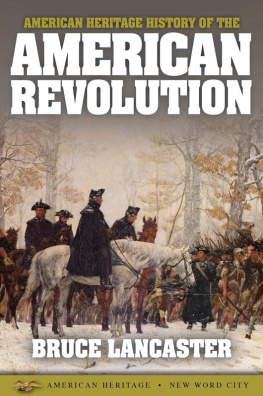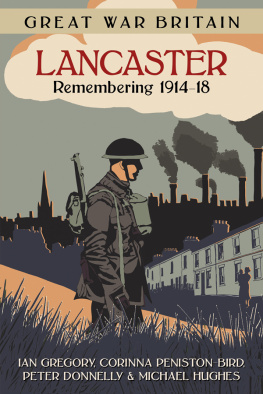

First Published in 2002 by
Wharncliffe Books
an imprint of
Pen and Sword Books Limited ,
47 Church Street, Barnsley ,
South Yorkshire. S70 2AS
Copyright Wharncliffe Books 2002
For up-to-date information on other titles produced under the Wharncliffe imprint, please telephone or write to:
Wharncliffe Books
FREEPOST
47 Church Street
Barnsley
South Yorkshire S70 2BR
Telephone (24 hours): 01226 - 734555
ISBN: 1-871647-95-9
eISBN: 978-1-78337-892-0
All rights reserved. No part of this publication may be reproduced, stored in a retrieval system, or transmitted, in any form or by any means, electronic, mechanical, photocopying, recording or otherwise, without the prior permission in writing of the publishers.
This book is sold subject to the condition that it shall not, by way of trade or otherwise, be lent, resold, hired out or otherwise circulated without the publishers prior consent in any form of binding or cover other than that in which it is published and without a similar condition including this condition being imposed on the subsequent purchaser.
A CIP catalogue record of this book is available from the British Library
Cover illustration: China Lane, Lancaster. Courtesy of Lancaster Libraries
Printed in the United Kingdom by
CPI UK
C ONTENTS
| Susan Wilson |
| Susan Wilson |
| Norman Gardner and Tony Noble |
| Peter Williamson |
| Suzanne Boutin |
| George Howson |
| Lois M R Louden |
| Bernard Gladstone |
| Graham K Dugdale |
| P J Hudson |
| Mike Whalley |
| Peter Williamson |
| Michael Margerison |
I NTRODUCTION
by Susan Wilson
FROM MORECAMBE BAY AND ACROSS to the Cumbrian Hills. This phrase opens Aspects of Lancaster. It is fitting because Lancaster is a historic town surrounded by a seaside resort and the wonderful countryside of the Lake District. The castle that is the focus of Susan Wilsons article is also right in the centre of Lancaster. The building, like the town, is steeped in history. Many notable events have happened over the centuries at the castle, not least the famous trial of the so-called Pendle Witches, one of many court proceedings to be held in our county town. Lancaster has its fair share of supernatural stories and ghostly tales, and Graham Dugdale recounts for us some most interesting examples.
Lancaster, and its neighbourhood also posses a deep religious history; Norman Gardner and Tony Nobles article points towards the empathy that has long existed in our locality for Catholicism. The stately spire of St Peters Cathedral has long been a prominent feature of the skyline, opposite the castle and the priory. Methodism has also flourished in and around Lancaster, as has the earlier religious movement known as the Religious Society of Friends or the Quakers as they became commonly known. Lois Loudens chapter on the Greaves Church demonstrates the strong Methodist feeling in the town, whilst several other articles refer to the key influence of the Quakers. Even Bernard Gladstones article on the Dukes theatre provides an unusual insight on an aspect of Lancasters religious history.
Industry and commerce played important roles in the growth of Lancaster to the present day. The splendid eighteenth century buildings along the Quay provide unmistakable visual evidence of commercial development, a theme discussed by Peter Williamson in his essay on Lancaster as a port. Suzanne Boutins article on stained glass also reminds us of our artistic and manufacturing heritage. Another reminder of local agrarian and industrial history is Phillip Hudsons interesting and detailed contribution on water-powered sites.
No history of Lancaster would be complete without some reference to Lord Ashton. The majestic memorial that rises above Williamsons Park, gifted by Ashton to his native city, is the subject of Mike Whalleys fascinating chapter which also gives us some insight into the man behind the edifice. Close by, is what was the Moor Hospital. The impressive building once played an integral role in Lancasters social history, serving as the County Lunatic Asylum. Its story is outlined by another contribution from Peter Williamson. A medical theme is also investigated by George Howson who explores several case-histories of Lancasters medical pioneers. Michael Margerison discusses the growth of the public library movement in Lancaster, providing us with yet another aspect of our social and community history.
Lancaster has a diverse and varied history and Aspects of Lancaster attempts to bring the reader a glimpse of its rich cultural heritage.
1. L ANCASTER C ASTLE AND THE F ATE OF THE P ENDLE W ITCHES
by Susan Wilson
MORECAMBE BAY TO THE CUMBRIA FELLS and back along the River Lune. This is the view that the eye can take in from Lancaster Castle (). The castle is the most important building in Lancasters long history. However, for such an important and strategic building, there is a certain amount of mystery surrounding the dates of its earliest history.
It is thought that a local tribe, the Brigantes, first set up a rough kind of Roman fort on the hill above the Lune. It was a natural lookout point, and there were several springs and a well so that defenders would always have their own fresh water supply. One of these wells still stands in the basement of the Well Tower.
Roger of Poitou, the son of William the Conquerors cousin, and a loyal supporter of Williams Conquest of England, was awarded lands between the River Mersey and Furness in thanks for his support. He chose to build on the hill, Cherca-Lon Castrumas, in part because of its natural spring, and founded the Priory Church on that site in 1084, and a few years later built the first Norman motte and bailey castle. After this, the castle belonged to various people, most famously perhaps, to John O Gaunt who built the gateway tower and endowed the castle with much of its splendour. The castle also has a great keep, known as the Lungess Tower. John Earl of Morton built the Gatehouse, and he was also responsible for enlarging the castle. Indeed, the castle has many different periods of architecture, although Saxon and Gothic are the prevailing styles.

Figure 1. Lancaster Castle in 1998. Authors collection
As well as being a fortress, Lancaster Castle has also served as a Gaol since 1585. Indeed, it is the oldest prison building in use in England, and many people have been tried and hung there over the years. Until 1799, the accused were taken out to Lancaster Moor and executed in public; after this date, hangings took place in the castle grounds, but they were still a public spectacle. In 1536, many were imprisoned following the Pilgrimage of Grace, an uprising against Henry VIII and his religious changes. Most famous among these, was John Paslew, the Abbot of Whalley Abbey in Lancashire. Similarly, following the Jacobite Rebellions against George I in 1715 and against George II in 1745, Lancaster Castle again played host to many of the captured. A number of the imprisoned, like the Catholic priest James Swarbrick, died in the castle before coming to trial. In 1652, the nonconformist George Fox had a vision on Pendle Hill, which led him to found the Quaker movement. Foxs refusal to take the Oath of Allegiance to Charles II meant that he too was imprisoned in Lancaster Castle.
Next page













